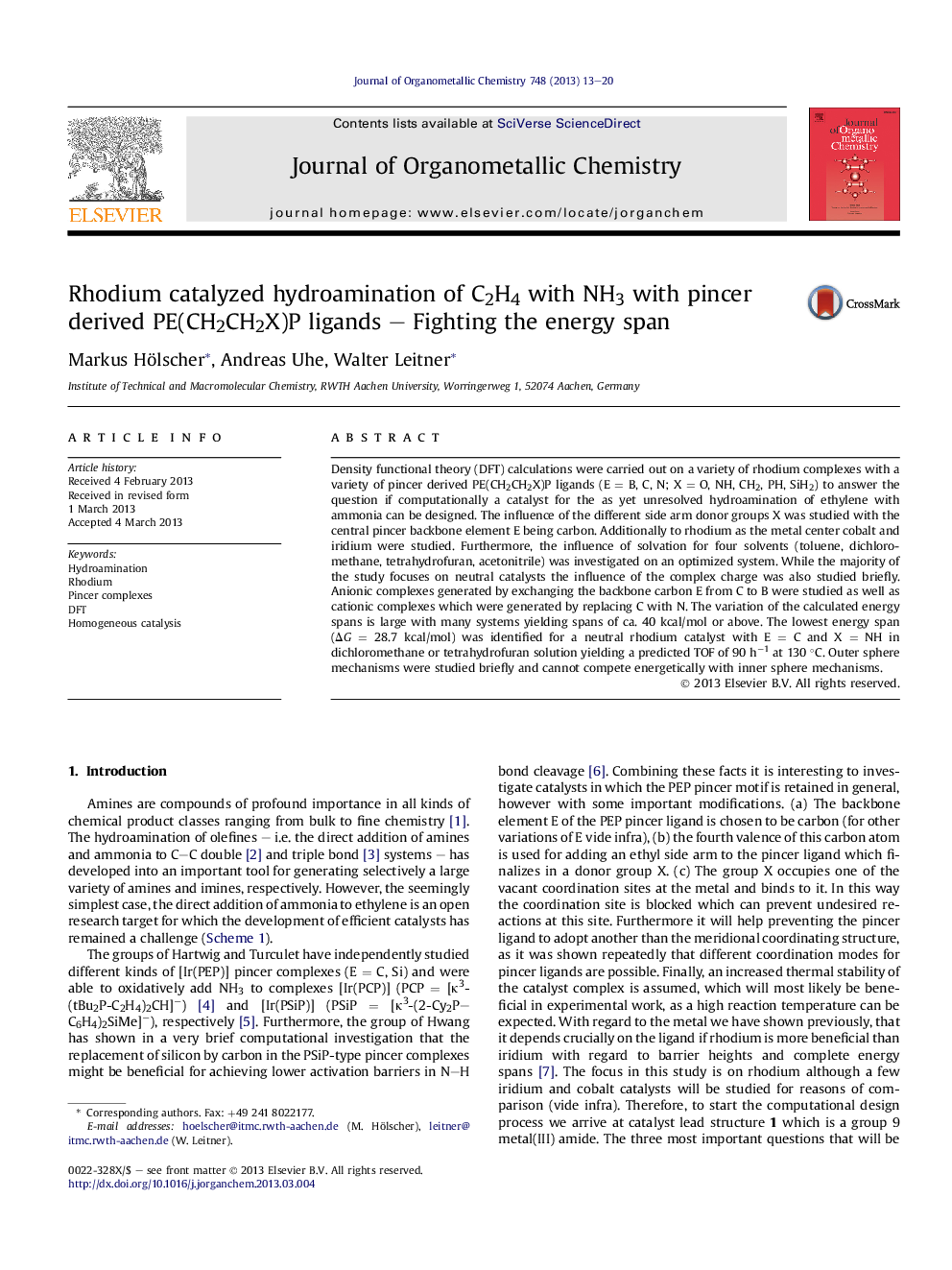| Article ID | Journal | Published Year | Pages | File Type |
|---|---|---|---|---|
| 1322599 | Journal of Organometallic Chemistry | 2013 | 8 Pages |
Density functional theory (DFT) calculations were carried out on a variety of rhodium complexes with a variety of pincer derived PE(CH2CH2X)P ligands (E = B, C, N; X = O, NH, CH2, PH, SiH2) to answer the question if computationally a catalyst for the as yet unresolved hydroamination of ethylene with ammonia can be designed. The influence of the different side arm donor groups X was studied with the central pincer backbone element E being carbon. Additionally to rhodium as the metal center cobalt and iridium were studied. Furthermore, the influence of solvation for four solvents (toluene, dichloromethane, tetrahydrofuran, acetonitrile) was investigated on an optimized system. While the majority of the study focuses on neutral catalysts the influence of the complex charge was also studied briefly. Anionic complexes generated by exchanging the backbone carbon E from C to B were studied as well as cationic complexes which were generated by replacing C with N. The variation of the calculated energy spans is large with many systems yielding spans of ca. 40 kcal/mol or above. The lowest energy span (ΔG = 28.7 kcal/mol) was identified for a neutral rhodium catalyst with E = C and X = NH in dichloromethane or tetrahydrofuran solution yielding a predicted TOF of 90 h−1 at 130 °C. Outer sphere mechanisms were studied briefly and cannot compete energetically with inner sphere mechanisms.
Graphical abstractA systematic screening of structural elements in Group 9 pincer complexes was conducted to evaluate their potential as catalysts in the hydroamination of ethylene with ammonia. For the best candidate a TOF of 90 h−1 at 130 °C in THF solution was predicted.Figure optionsDownload full-size imageDownload as PowerPoint slideHighlights► Computational investigation of catalysts for the hydroamination of C2H4 with NH3. ► Systematic screening of structural motifs. ► For the best candidate a TOF of 90 h−1 at 130 °C in THF solution was predicted.
